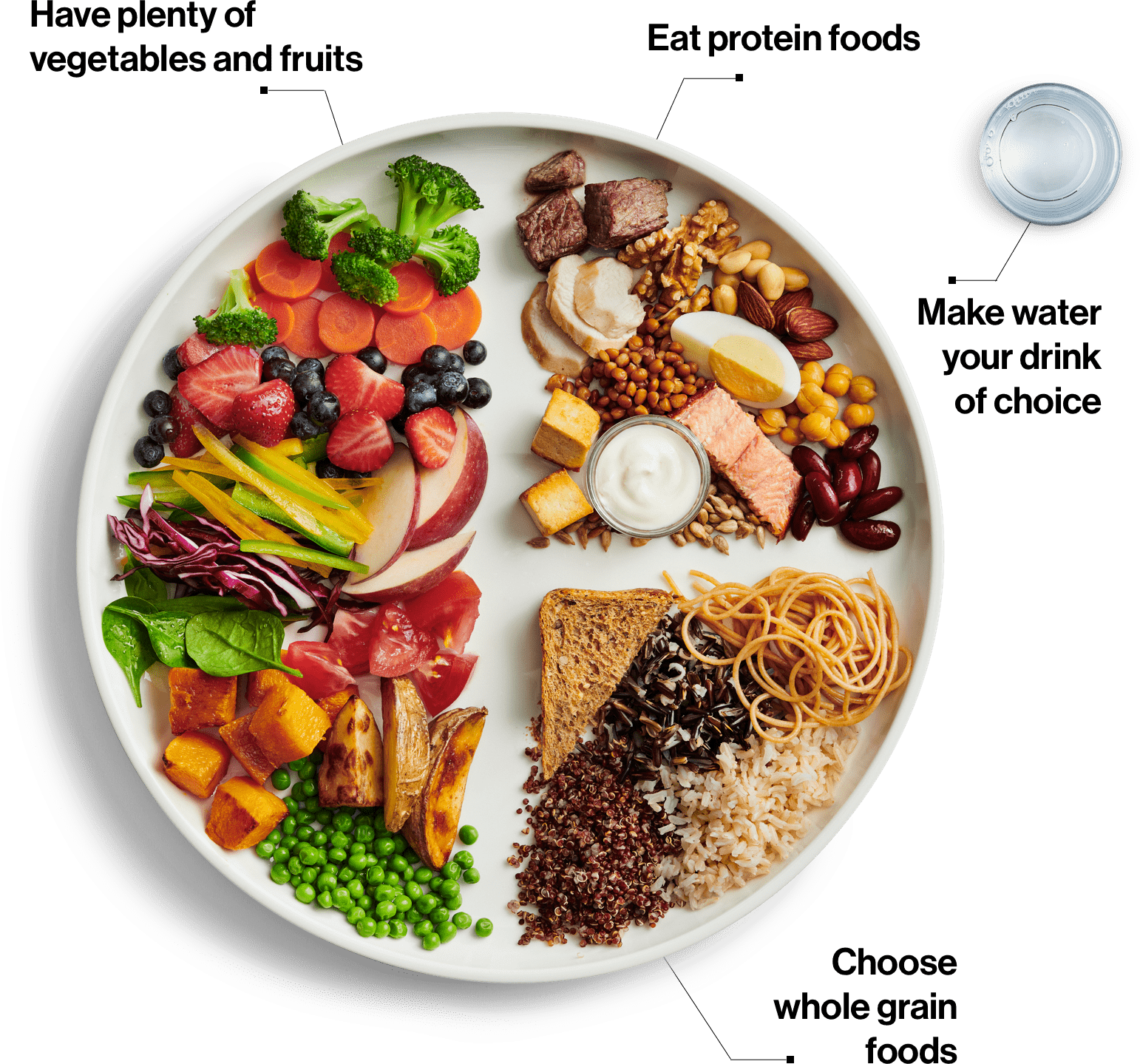The government of Canada presented a dramatic overhaul of their Food Guide this week, encouraging fruit and vegetable consumption while reducing previous guides' emphases on meat and dairy. What are the new dietary recommendations and how much of an impact on Canadians' buying behaviour can fruit and vegetable growers can really expect from the new Guide? Read below to find out in this week's blog post.
For the past four decades, the Food Guide has educated Canadians on four food groups: milk and milk products, meat and meat alternatives, grain products, and fruits and vegetables. With the new Food Guide, Health Canada reduced those groups to three: fruits and vegetables, whole grains, and proteins.
The illustration released with 2019's Canada Food Guide is of a plateful of food, divided neatly into one-half vegetables and fruits, one-quarter whole-grain foods and one-quarter assorted protein-rich foods.
Even within the “protein” category, meat and dairy is downplayed. “Among protein foods, consume plant-based more often,” the new guide says. “The regular intake of plant-based foods – vegetables, fruit, whole grains, and plant-based proteins – can have positive effects on health." Absent from the new pictorial are depictions of 2 per cent milk, processed cheese slices, orange juice, and packaged deli meat - all of which were hailed as healthy choices in previous Guides. Sugary drinks and alcohol are also strongly discouraged.
The new Food Guide's emphasis on fruits and vegetables can only spell good news for the horticulture industry. But how much of an impact does the Food Guide actually have on consumption habits?
According to a BMC Public Health study conducted in 2007 called "Are We Really 'Eating Well with the Canada Food Guide'?", more than80% of Canadians have heard of the Canada Food Guide (though women made up the majority of this group). Most knew that ‘Vegetables and Fruit’ had the most recommended servings and that dark green vegetables should be consumed daily (however, fewer than 50% knew this of orange vegetables).
Most importantly, those who consulted the Canada Food Guide recently were more likely to consume the recommended servings of vegetables and fruits. Canadians who consulted the Guide within the past six months were also significantly more likely to have ten or more servings, and significantly less likely to have fewer than five servings, of fruits and vegetables.
The study concluded that the Food Guide does "appear to influence dietary behaviour of a considerable segment of the population". With the boom of social media since 2007, it can only be assumed that Canadian's awareness of the Food Guide has only grown since then - and hence the Guide's impact on dietary behaviours may be even stronger.
The takeaway? The new Canada Food Guide will likely influence Canadians to consume more fruits and vegetables, which is happy news for domestic growers and those importing into Canada. Still, produce market boards may want to boost efforts to educate Canadian men on the Canada Food Guide and the starring role of fruits and vegetables. Orange vegetables should also be marketed as a daily staple, just as dark green vegetables are considered to be in most consumers' minds. Growers may wish to utilize their own social media to help propogate this information, too.
Want a refresher on any of Croptracker's features? Head over to our Knowledge Base, where you'll find step-by-step tutorials as well as common troubleshooting tips and more. And as always, if you're ever stuck, never hesitate to e-mail us at support@croptracker.com or Live Chat with us by clicking the green speech bubble ![]() in your bottom right-hand corner. We're always happy to help you let Croptracker make your farm become more efficient, safe, and profitable!
in your bottom right-hand corner. We're always happy to help you let Croptracker make your farm become more efficient, safe, and profitable!
| Missed Last Week's Blog Post? Microplastics Feared To Be Permeating Agricultural Land |


